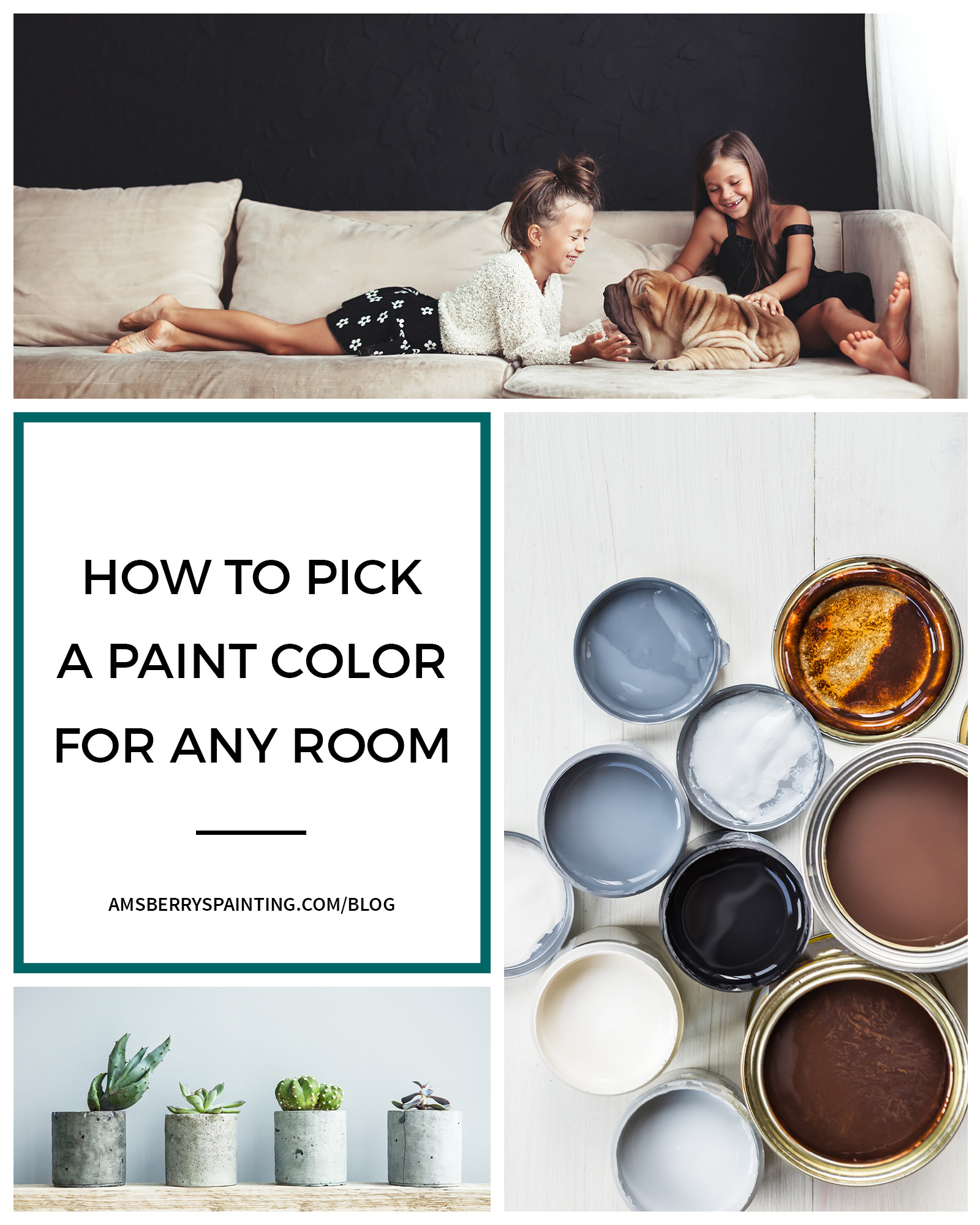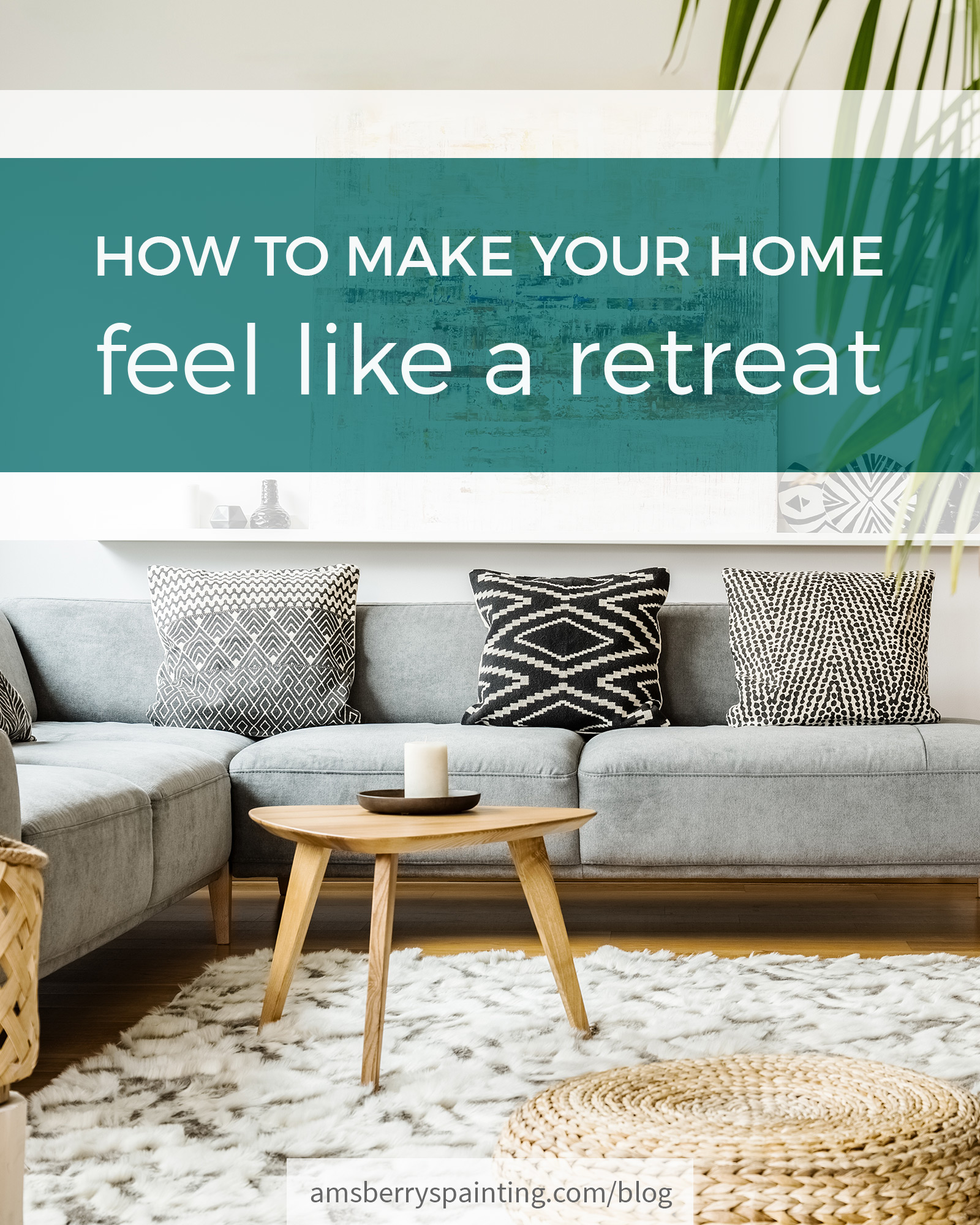
13 Dec How to Choose a Paint Color for Any Room
As we head into the holiday season and families gather in homes, you may be finding that you’ve got a few rooms that need to be repainted. Sometimes, the most difficult part of that can be finding the right color. With thousands of color swatches to choose from, the process can be incredibly overwhelming. Today’s post is a quick guide on how you can pick a color for any room in your home.
FOCAL POINT
The first step to finding the perfect color for an interior room is to choose the focal point. The focal point of the room is simply the feature that you want to draw the most attention. It’s the area that the eye is naturally drawn to upon entering a room. If you’re loving the color of your carpet, a large window, or a tile feature in the room, there’s your focal point.
If the room doesn’t naturally have a focal point, look into making one. This can be a piece of furniture, artwork, or another decorative item in the room. People normally use the comforter on a bed, a sofa, or a large painting. Keep in mind that removing that item from the room a few years down the road may deprive the space of its focal point.
MONOCHROME
Now that you’ve got your focal point, it’s time to get your fan deck. We recommend that you pick one up from your local Sherwin Williams or similar paint store to get a physical example rather than trying to use the color swatches on their website, as the paper copy tends to be more true to color than the backlit screen.
If you’re wanting a monochromatic and cohesive look, choose a wall color that is similar or identical to the focal point you’ve chosen. This technique, especially with soft colors, makes the room look peaceful and appealing.

NEUTRAL
A neutral wall color is a great option when your focal point is a vibrant, dark or standout color, as it helps offset any other color in the room. If you’re leaning toward something more expressive or softer than a straight white, try a color from your fan deck that has the same undertone as the color of the focal point.
A neutral color can work well if your focal point is neutral as well. Use of a gray, beige, or off-white can add a level of sophistication to a space that is hard to obtain with other shades.

CONTRAST
Choosing a contrasting color to your chosen focal point can help pull a room together, especially if you’re trying to figure out how to incorporate a bold color into a room while trying to avoid the color being overwhelming.
The key to making a good contrast in a room is to choose a color that is on the opposite side of the color wheel from the color of your chosen focal point. For instance, if your focal point is blue, purple, or a similar cool-coned color, a burnt orange or red would make a nice contrast. Contrast can also be created by using dark and light colors. For example, opting for a dark wall color creates a striking contrast paired with a light colored focal point like in the photo below.

Whatever direction you choose to go with your interior design, whether it’s a monochromatic, neutral, or contrasting look, the change will make your space feel more like home. This is a quick guide to picking a color that we hope helps you narrow down a color for your next project. Here at Amsberry’s Painting, we know how much color matters. If you’re still unsure about what approach to take, we’re happy to do a color consultation with you at our office in Monroe and help you obtain paint samples if necessary. If you’re feeling inspired and want to repaint a room, book a free estimate today!

Writer Bio: Ellen Coy
Ellen has held both the Office Assistant and Office Manager positions at Amsberry’s Painting, and is currently a student of The King’s College in New York City. She loves reading, writing, and The Pacific Northwest. She can usually be found with a cup of tea.




